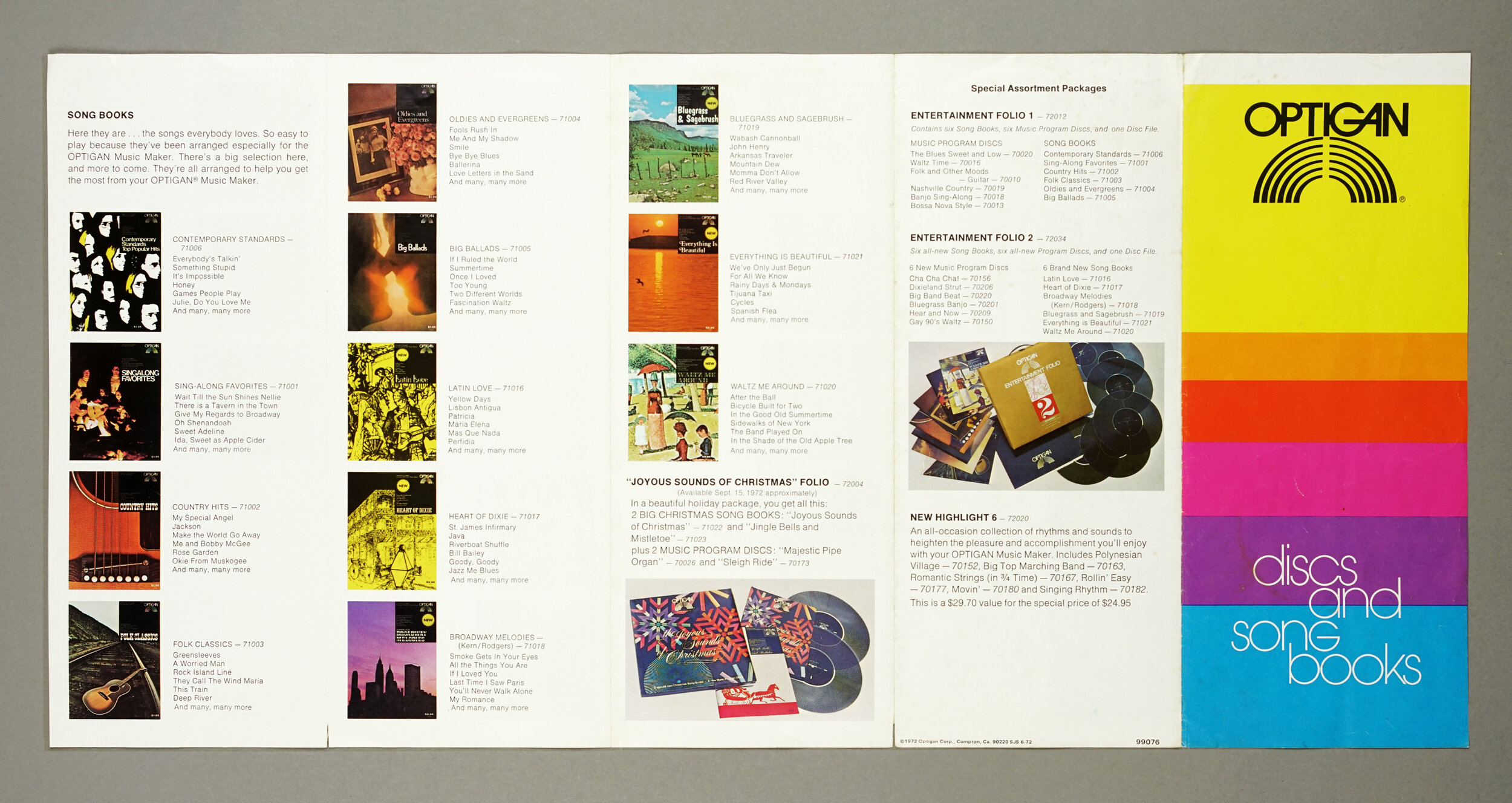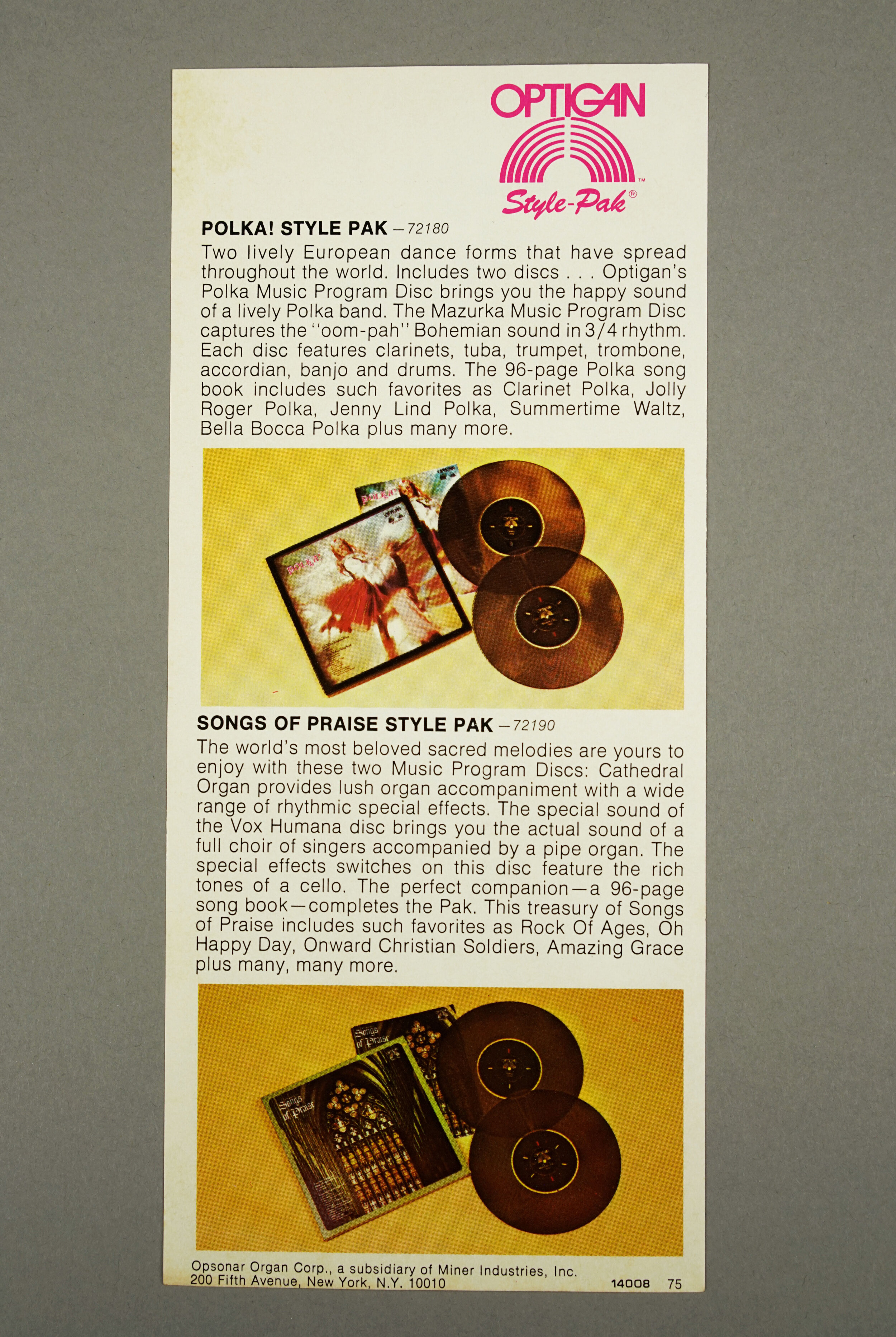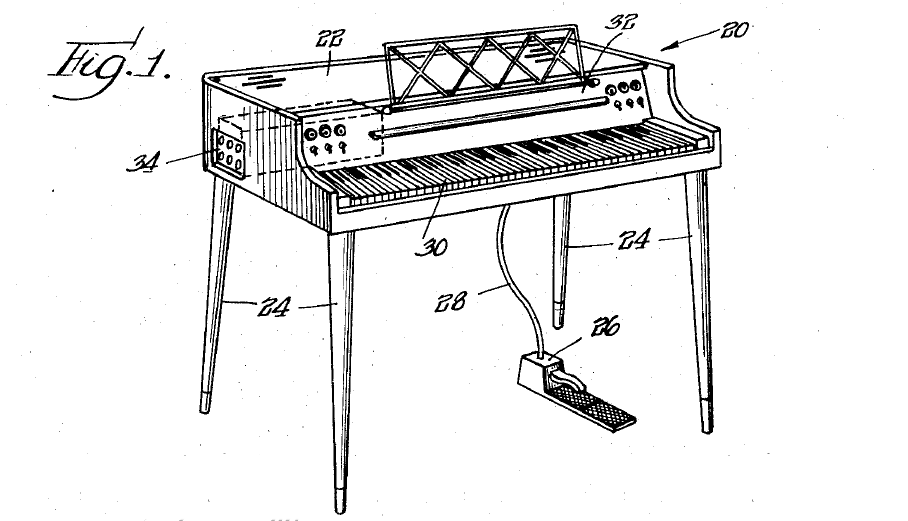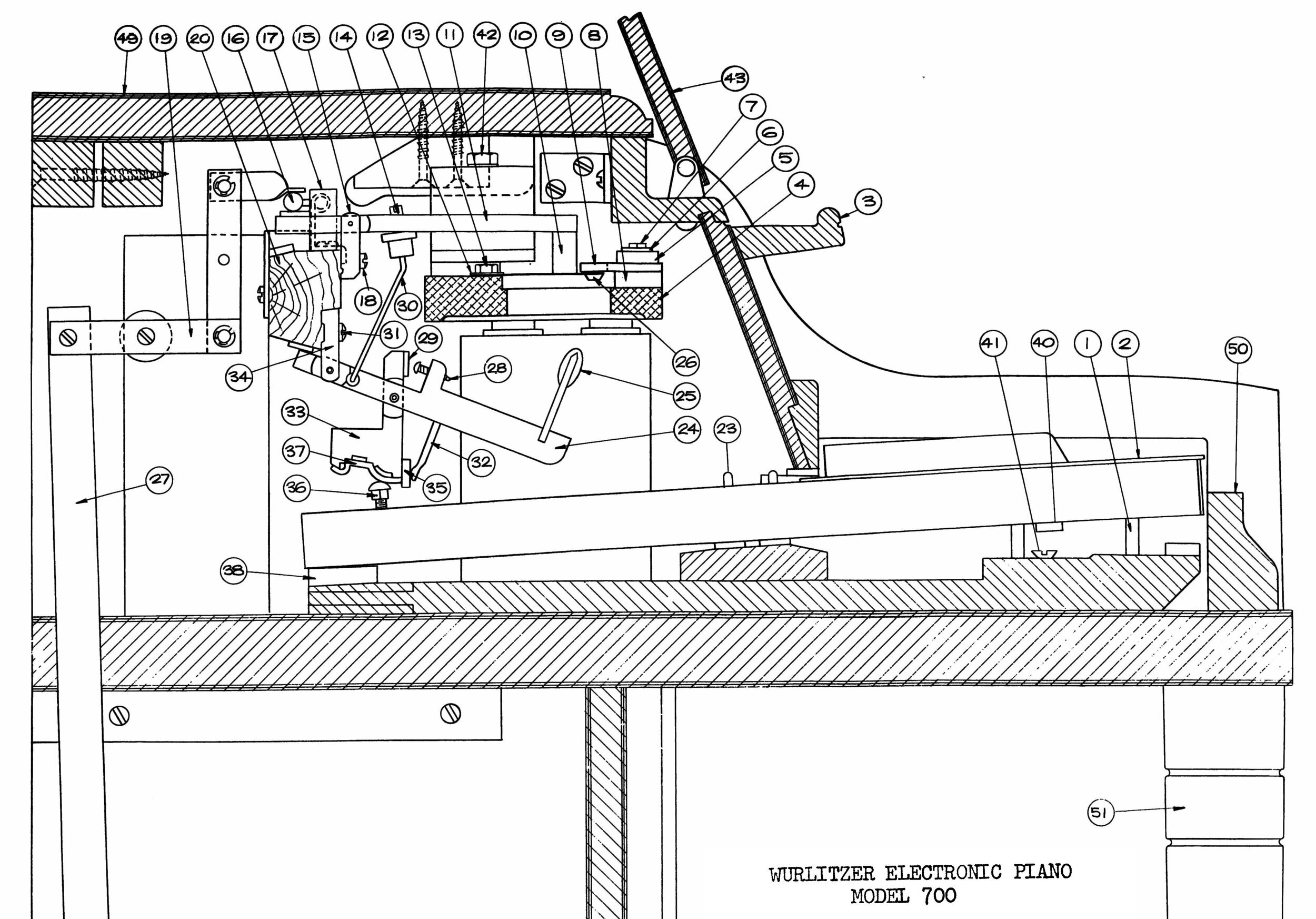On the Optigan brochure
We were lucky enough to score this mid-1970s Optigan brochure. It contains a list of (presumably) all discs that were available at the time, plus all of the songbooks. We scanned the brochure so that you too can have a convenient wishlist of all the Optigan discs that you need!
We love the Optigan, not because it’s a particularly functional piece of studio gear, but because it’s a mood. Repairing an Optigan is a labor of love. If you are attached to the idea of being able to use every key on your keyboards, an Optigan is probably not the instrument for you. It’s difficult to set the speed correctly; if the idler wheel is worn down, every disc has haunted house vibes. But if you can live with a couple of idiosyncrasies, and are willing to attempt a few repairs, it is an amazing thing. In our opinion, the Optigan sound and its deeply 70s backing tracks are more than worth the effort.
There are so many paradoxes regarding the Optigan. It needs to be kicked apart, and yet the wiring is extremely fragile. It was designed for total beginners, and yet it had a professional-level price tag ($400, or $2500 in today’s dollars). The instrument as a whole has a very cheap, plasticky construction, and yet the production value of the discs is high.
From the disc illustrations to the ripped-from-the-Billboard-charts beats and riffs, everything about the Optigan is so 70s-trendy that the instrument in general has a distinct time-capsule quality. Its creators seem to have been self-aware about this: one disc, entitled Hear and Now, features a hazy portrait of a woman seated beside a curtained window, almost certainly inspired by the cover of Carole King’s Tapestry. The catalog blurb describe the disc as “a new Optigan program, featuring the sound of the 70s.” This is an incredible assertion, considering that Optigans were only manufactured between 1971 and 1976. Although knee-deep in the 70s themselves, Optigan’s creative team was able to precisely identify exactly what made the 70s feel so 70s. It isn’t easy to do this when you are living in the moment yourself.
This was probably their undoing. Consumers want technology that looks to the future — or even the past — not technology that reminds them that life is short, every moment is fleeting, and your paisley shirts and favorite songs will very soon feel dated and vaguely embarrassing. If the best thing you can say about your 1970s instrument is that it features “the sound of the 70s,” that’s not great. A successful product certainly exploits what’s hot “right now,” but it’s one of those blink-or-you-miss-it things. Once you put your finger on “the now",” the moment has already passed and the cool kids are on to something else.
So, the fact that Optigan was able to claim, in a brochure, that a disc “features the sound of the 70s,” is a big red flag regarding the real-life, in-the-moment trendiness of whatever is on the album. Pop music moves too fast. Because the brochure is labeled “Opsonar,” we know that it was released after 1973, the year that Miner Industries acquired the Optigan from Mattel. Tapestry was released in 1971; by the mid-70s, disco was comfortably ascendant. Although Tapestry was a highly-influential album, its folky piano-driven sound wasn’t that common on the Billboard charts in the following years. Instead, musicians discovered electronic effects, and driving guitar tones became the answer to disco effervescence. If Tapestry was Opsonar’s idea of “the sound of the 70s,” the Optigan was already a period piece.
More notes from the brochure
Singing Rhythm. We will never get over how creepy the cover of Singing Rhythm is. Rollin’ Easy, Movin’, and Cha-Cha-Cha all have models on the cover, so we know that Optigan had access to images of real people (this seems obvious, but who knows how commercial photography worked in the 70s?). And yet for Singing Rhythm, they opted for an array of mannequin heads. And not just any mannequin heads!!: weird gimp suit mannequin heads. Maybe we’d be less creeped out by the whole thing if we hadn’t seen Boxing Helena? Maybe the writers of Boxing Helena were actually inspired by their childhood Optigans?? Anyway, Singing Rhythm is definitely a must-have.
“Listen to that old-timey plunka-plunk.” The description of Organ Sing-Along is a little too real.
The trippy covers of Gospel Rock & Guitar Boogie. Simply amazing. Guitar Boogie also declares that its “boogie beat” has been “up-dated for the 70s.” It is unclear whether anyone needed the reassurance, but these two are definitely on our wishlist.
It is very interesting how many different genres are represented in this brochure. Some of the genres are extremely specific — Gay 90’s Waltz, anyone? — while others seem excessively obscure. (What is “champagne music,” exactly?) More importantly, most discs in the brochure seem to have very little crossover appeal: do Nashville Country fans typically like classical guitar? The Optigan only works when you have the discs to go with it; judging by the brochure offerings, most people — unless they have extremely eclectic taste — would probably only find three or four appealing. We love all Optigan discs, but if we were around in the 1970s I’m not sure we’d drop the equivalent of $2800 for an ironic chord organ that primarily allowed us to play along to all the smash hits of three years ago. Most of the Optigan’s appeal today is the instant retro sound that you achieve — not exactly something that would have been a selling point at the time.
A few problematic design elements (to say that least). “Haunting native rhythms” is an extremely regrettable description for Polynesian Village. It’s also unclear why Optigan chose to illustrate Dixieland Strut with what appear to be cave paintings. Details like these are a reminder that the past wasn’t all psychedelic prints and lo-fi beats: there’s also casual racism, a fact that helps keep our nostalgia in check.
Further Reading
Browse all of our articles on restoring vintage gear. Or, click on an image below.









